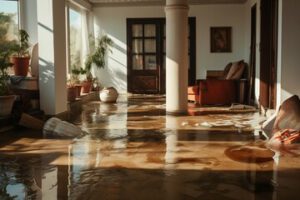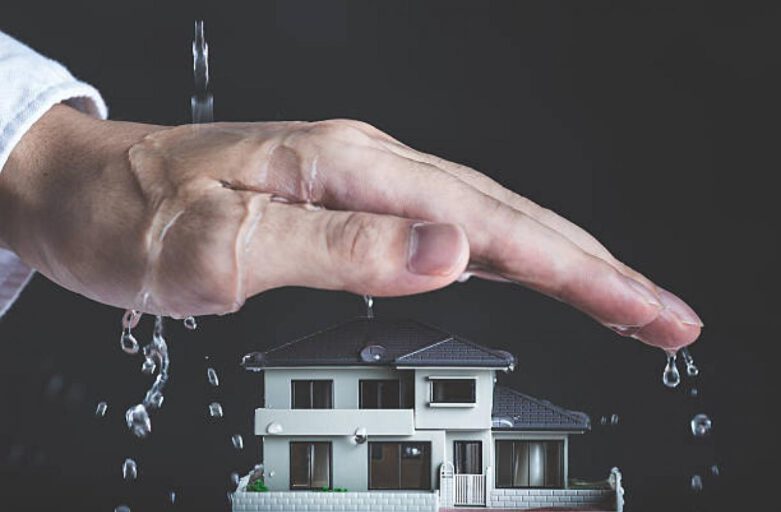Water Quality Testing Colorado is the most critical first step in ensuring safe and clean drinking and washing water. Various physical, chemical, and bacteriological tests can be used to test for pollutants in water.
For example, nitrate is often measured using test strips or color disk kits, while chlorine residual may be tested with handheld digital meters.

Water quality tests examine how a sample of water behaves or performs. The three main physical water quality parameters and indicators are conductivity, acidity, and turbidity. These are based on physical changes in the water that have nothing to do with chemicals but rather relate to how well or poorly it functions in its environment.
Conductivity, or electrical conductivity, measures how easily a water molecule can carry an electric current. It is measured using a conductivity meter that applies a voltage between two electrodes inside the probe. When the ions in the water conduct electricity, the meter will register a drop in the voltage that can be used to calculate a reading of the water’s conductivity.
A second physical water quality parameter is salinity, which reflects how salty or fresh a water source is. The higher the salinity, the more saline it is; lower, more freshwater. Salinity is determined by measuring the amount of dissolved salts and other minerals in water, which is accomplished with a salinometer or similar instrument.
Another key physical water quality metric is dissolved oxygen, which is the amount of oxygen in the water compared to its volume. Dissolved oxygen levels are often affected by water temperature, salinity, and pressure. They can also be affected by the types and concentrations of bacteria in water and whether they are alive or dead.
Other important physical water quality metrics include pH, which measures how acidic or alkaline a water is; and turbidity, which refers to the cloudiness of a water sample. High turbidity levels can be caused by different suspended materials, including organic material, clay, silt, and other particulate matter. Turbid water is not only aesthetically unappetizing but can also hinder the effectiveness of disinfection processes. It can also provide hiding places for harmful microorganisms and shield them from disinfection byproducts.
The last major physical water quality metric is color, which is graded on a scale of 0 to 70 color units (TCU). Pure water is nearly colorless. Taste and odor are also important physical water quality factors, and they can be affected by foreign substances such as organic material and inorganic compounds.
Water quality parameters measure the chemical characteristics of water. These can include pH, acidity, alkalinity, hardness, dissolved oxygen, biochemical oxygen demand and chemical oxygen demand, as well as the presence of toxic metals (such as copper, cadmium, lead, zinc) and radioactive contaminants.
Water is tested for these properties by professionals using specialized equipment in laboratories or by homeowners using prefabricated testing kits. A typical water sample is collected by collecting a swab from the surface of a glass of water, or by running a faucet for a minute or more. This water is then transported to a laboratory, where it is analyzed for a number of water quality parameters.
The core physical parameters are temperature, color, taste and odor, turbidity, solids and electrical conductivity. These tests are conducted for the purpose of identifying contaminants that could present a threat to human health. Solids are determined by running water through a filter to capture dissolved and suspended solids. Turbidity indicates the amount of foreign matter in water, such as dust or sand, that will hinder the ability of light to pass through it. Water with turbidity readings of over five NTU is considered cloudy and requires further analysis. Electrical conductivity refers to the ability of a liquid or similar solution to carry an electric current. Higher levels of conductivity are indicative of a higher concentration of ions in the liquid or solution.
Dissolved oxygen is a key indicator of the health of a river, stream or lake. A low level of dissolved oxygen indicates that the water is highly polluted, as dissolved organic contaminants will consume the oxygen. Dissolved oxygen measurements are often conducted in conjunction with salinity and biological parameters.
Biological water quality parameters determine the presence of bacteria, algae and viruses. These can be a threat to humans, as they can contribute to diseases such as E coli, salmonella, cholera and leptospirosis. Tests for these waterborne bacteria are commonly performed by using fecal coliform and/or E coli indicators.
Viruses are more difficult to detect. These may be present in water that is contaminated with industrial chemicals but can also be found in water sourced from natural sources. Testing for these contaminants uses powerful electron microscopes and polymerase chain reaction (PCR) methods.
VOCs are man-made chemicals that vaporize at normal air temperatures and are water soluble. They are commonly found in paints, cleaning products, and adhesives, as well as in gasoline and other automotive fluids and plastics. While VOCs can be emitted naturally from certain types of vegetation, they are more often a result of human activities such as industrial processing and chemical spills. VOCs can also be leached into groundwater, which is why it’s important to test for them.
In terms of the environment, they contribute to ozone depletion and photochemical reactions that form ground-level ozone. These reactions can lead to ozone smog, which is particularly hazardous to health. The chemical group includes compounds such as ketones (acetone, methyl ethyl ketone), ethers (acetonitrile, methyl tert-butyl ether) and aromatics (toluene, xylene, naphthalene).
The main concern about VOCs is their impact on indoor air quality. They can be toxic to the respiratory and cardiovascular systems, as well as cause irritation of the eyes, nose, and throat. Some VOCs, such as benzene and formaldehyde, are classified as carcinogenic and can trigger a range of symptoms including headaches, nausea, vomiting, loss of coordination, and even death. Other VOCs, such as limonene and hexane, are less hazardous but still pose a risk to human health.
Although VOCs are less soluble than other petroleum products, they can still be transferred through groundwater, which makes it difficult to avoid exposure. This is why they are regularly detected in city water supplies, but are more likely to be found in private wells contaminated by leaks from underground fuel tanks or chemical spills. They can also be a source of water contamination from herbicides and pesticides such as glyphosate, which has been linked to a range of health problems including cancer.
In drinking water, VOCs can contribute to low oxygen levels in the water, which can threaten aquatic life. The Environmental Protection Agency sets maximum contaminant levels for these chemicals, which are then monitored and regulated by state agencies in order to ensure safe drinking water. If you suspect your water contains VOCs, contact a laboratory that can perform GC-MS analysis for you. Agilent offers a wide selection of GC-MS workflow consumables that can help you measure and report on your VOC results according to EPA protocols.
Bacteria are found everywhere in our environment, including in our surface water and groundwater. Some of these bacteria are harmful and can cause disease in people. It is impractical to test for every germ and chemical that can make people sick, but there are some common tests that can indicate whether a water supply might be contaminated with disease-causing pathogens.
For example, a test for the general indicator bacteria called total coliforms can help to detect whether fecal contamination is present in a water sample. The presence of a specific kind of coliform, Escherichia coli (E. coli), indicates that the water may contain feces from human or animal sources. It is also possible to test for the presence of other, more dangerous E. coli strains that can cause diseases like diarrhea, dysentery and hepatitis.
The presence of other bacteria, viruses or parasites in drinking water can also be a health risk, particularly for infants, young children, pregnant women and people with weak immune systems. Water quality testing can include a test for these, as well as a variety of other substances that could cause illness.
Many of these contaminants can be detected with a simple home kit that can be purchased online, but most are best tested in a lab given the technical requirements to get accurate results. The lab will test for the concentration of contaminants and provide a report that shows how much of each one is present in your water. Concentrations are usually reported in milligrams per liter (mg/L) of water, although some very toxic chemicals are measured in parts per million, or ppm.
Before interpreting any water quality testing results, you should check with your state or local health department and ask for guidance. Some contaminants, such as arsenic and fluoride, are regulated at the county level. Others, such as mercury and pesticides, are controlled at the federal level. The contaminants that you should test for will depend on where your water comes from and what other pollutants are being used in the area. If your private well is close to a farm, for instance, you should probably test for agricultural chemicals.

